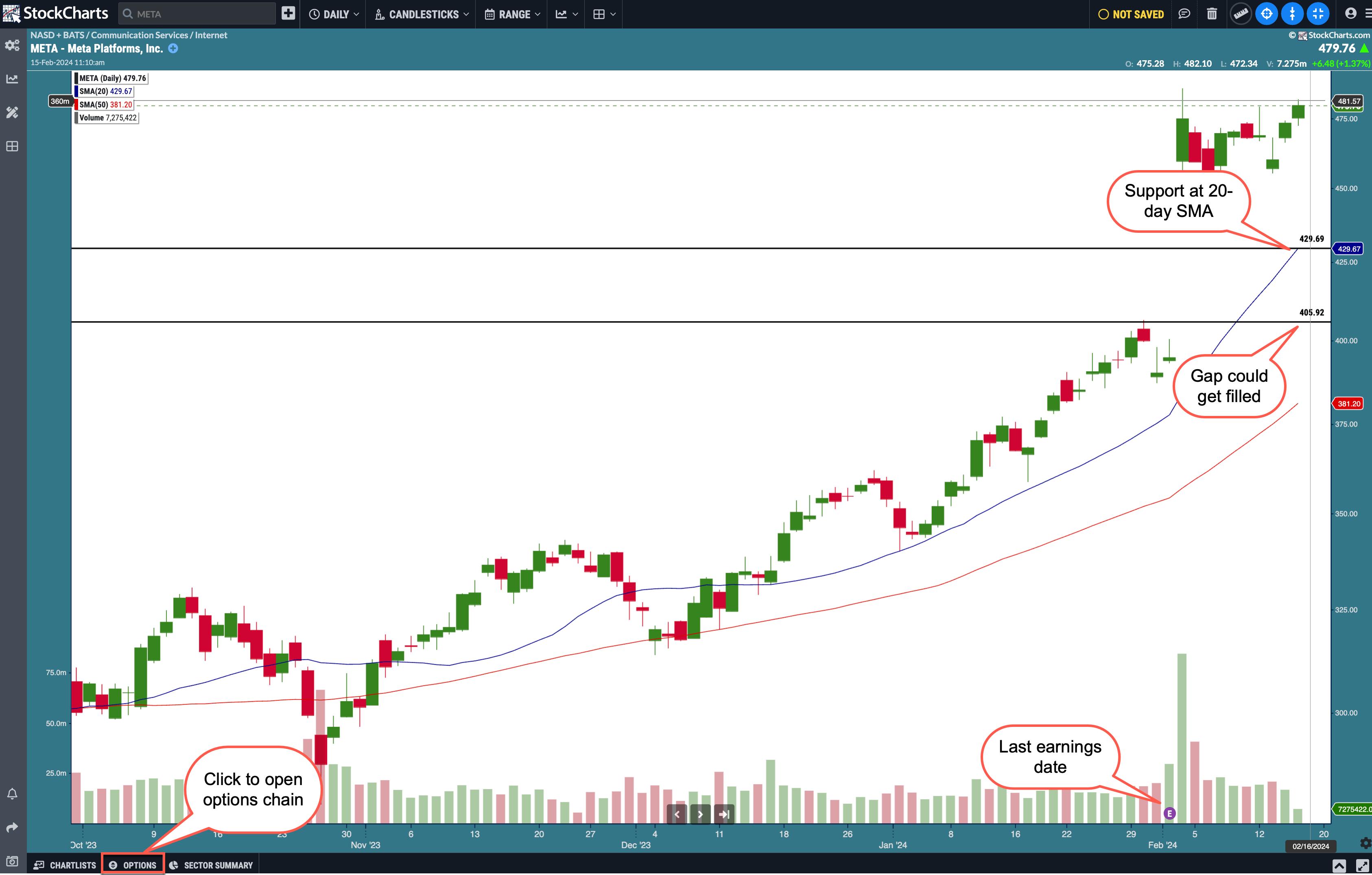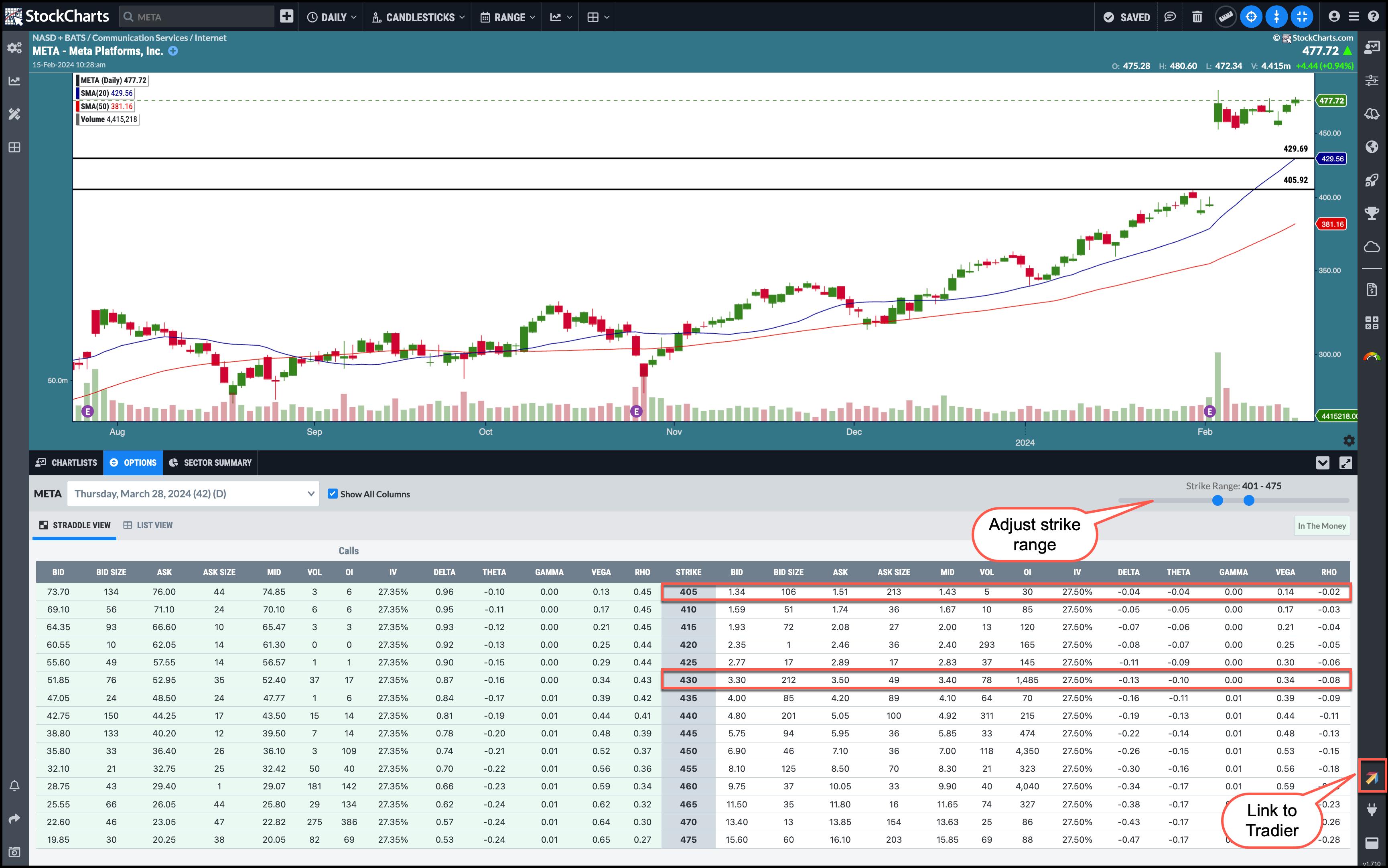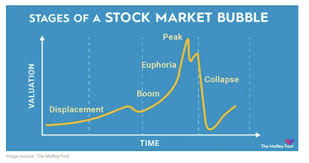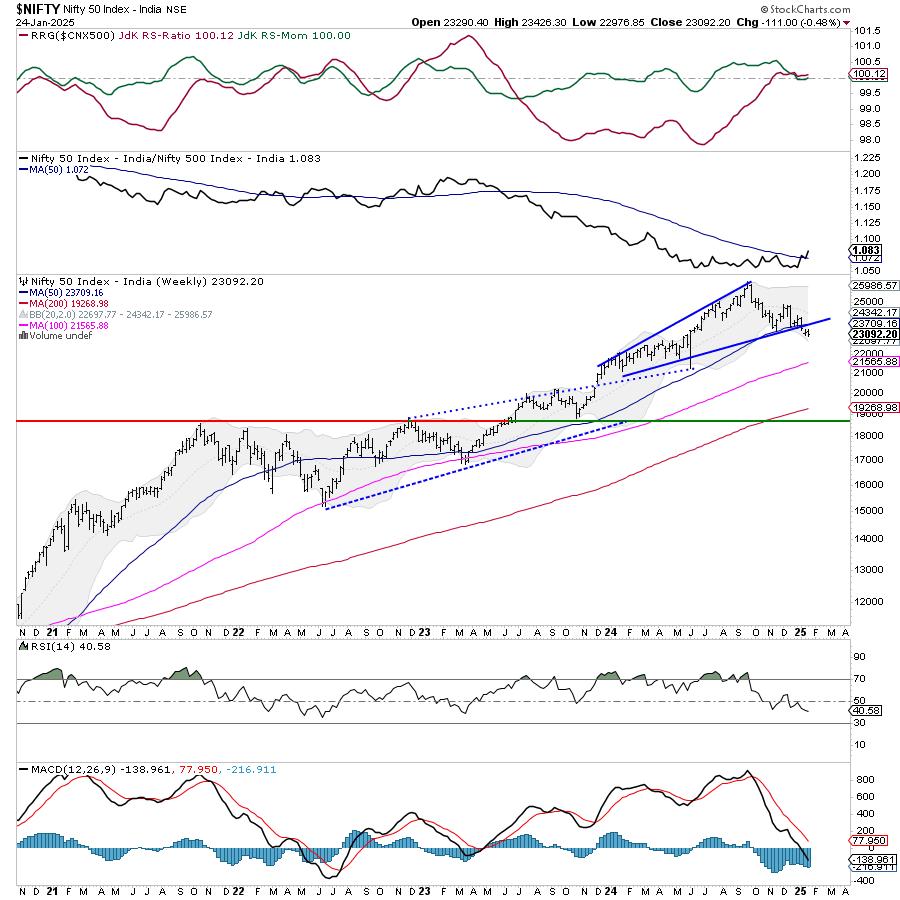KEY
TAKEAWAYS
- META rose after the company’s last earnings report and could be due for a pullback
- If META pulls back, you could buy the stock at a lower price using options
- By selling puts, you could collect premium from selling puts with the possibility of buying META at a price you want
Meta Platforms, Inc. (META) is one of the top S&P 500 performers this year. You probably want to own some shares of it—but not at that $485 price tag.
In an overextended stock market, with the biggest tail risk being inflation, it’s not surprising to see selloffs in the stock market after CPI numbers that reveal that inflation remains a concern. We saw such a selloff after January’s CPI number. After the selloff, buyers took advantage of the lower prices, and buying pressure increased. This activity is called a shakeout; we will see more of these as more economic data is reported between Fed meetings.
Pullbacks are a great opportunity to pick up equities and, if META stock falls, you could pick up 100 shares of META by selling cash-secured puts.
What’s a Cash-Secured Put?
It’s when you sell a put option and set aside cash in your account to cover buying 100 shares of the stock if you get assigned. Here’s how it works.
Let’s say you want to buy 100 shares of META. When you pull up the daily chart, you can see that META’s price gapped up after its recent earnings.
 CHART 1. DAILY CHART OF META PLATFORMS STOCK. After its last earnings, Meta’s stock price gapped up. Is there a chance that the price will fall and fill the gap up, or could the stock price fall to its 20-day simple moving average (SMA)?Chart source: StockChartsACP. For educational purposes. There’s a chance the gap will get filled. That means Meta’s price could also go as low as $406, the high before the gap up after the company’s most recent earnings report. Another scenario is that META could find support at its 20-day simple moving average (SMA), bringing the price to around $430. If the price fell to these levels, you could pick up 100 shares of META at a lower price, plus a bonus.
CHART 1. DAILY CHART OF META PLATFORMS STOCK. After its last earnings, Meta’s stock price gapped up. Is there a chance that the price will fall and fill the gap up, or could the stock price fall to its 20-day simple moving average (SMA)?Chart source: StockChartsACP. For educational purposes. There’s a chance the gap will get filled. That means Meta’s price could also go as low as $406, the high before the gap up after the company’s most recent earnings report. Another scenario is that META could find support at its 20-day simple moving average (SMA), bringing the price to around $430. If the price fell to these levels, you could pick up 100 shares of META at a lower price, plus a bonus.
Bring up a chart of META in StockCharts and view the options chain for META. The chart below is from StockChartsACP. Select the expiration date (in this example, the March 28 expiration is displayed), and adjust the strike range to reflect the price range of your interest.

CHART 2. OPTIONS CHAIN FOR MARCH 28, 2024. The 404 put strikes have a bid price of $1.34, whereas the 430 put strikes have a bid price of $3.30.Chart source: StockChartsACP.com. For educational purposes. Looking at the options chain, the 405 strike has a bid price of $1.34 and a delta of -0.04, which means there’s about a 96% probability the option will expire out of the money (OTM). The 430 strike has a bid price of $3.30 with a delta of -0.13 or around an 87% probability of expiring OTM. You can go down the chain and analyze the other strike prices.
If you want to purchase the stock at either of these prices, you want it to be in the money, but remember, these values change drastically from one day to the next. For this example, we’ll stick to the 405 and 430 strikes, since they coincide with support levels on the price chart. This will also help you understand how options work. Explore the different options chains and decide which strikes and expirations are best for your objectives.
Applying the Cash-Secured Put Strategy

If you sell the March 28 405 strike puts, you’d collect $134 in premium. Remember, one option contract represents 100 shares of the underlying security. If Meta’s stock price stays above $405 before your option contract expires, you keep the $134. If the stock price falls below $405 before your contract expires, you’ll have to buy 100 shares of META for $405 per share. This is why you must have the cash—in this case, $40,500 (less transaction costs) in your trading account—before you sell the put contract.
If you sell the March 28 430 puts, you will collect $330 in premium. If META closes below $430 before the contract expires, you have to buy 100 shares of META for $430 per share. You’ll have to have $43,000 in your trading account. You get the idea.
Analyze the options chain for other stocks that are on your wish list. You could buy the stock at a price lower than where it is trading and keep the premium. The downside: You get assigned, buy 100 shares of META, and the stock price falls further.
You’ve Got Lots of Options
You want to sell puts that give you a decent premium, so don’t sell something with too low of a price. That’s not worth the time you’ll have your cash sitting idle, waiting to purchase the stock if it drops to your selected strike price. And if you want to own the stock, you want to pick a strike price the stock is likely to reach. The same goes for expiration dates. Choose one that makes sense to you. Typically, it’s best to analyze options with about 30–45 days to expiration, but that’s not written in stone. Check out the options chains for further expirations and determine your sweet spot.
Options provide a ton of flexibility. There’s some art and science in deciding which options strike to trade. Once you decide which put to sell, and if you have a Tradier account, link directly to your trading account and place your trade. Then, monitor the stock price.
Get Started With StockChartsACP
StockChartsACP is a comprehensive and interactive charting platform with tons of dynamic capabilities. Check out the video below for a guided tour.
Disclaimer: This blog is for educational purposes only and should not be construed as financial advice. The ideas and strategies should never be used without first assessing your own personal and financial situation, or without consulting a financial professional.

Jayanthi Gopalakrishnan is Director of Site Content at StockCharts.com. She spends her time coming up with content strategies, delivering content to educate traders and investors, and finding ways to make technical analysis fun. Jayanthi was Managing Editor at T3 Custom, a content marketing agency for financial brands. Prior to that, she was Managing Editor of Technical Analysis of Stocks & Commodities magazine for 15+ years.
Learn More





